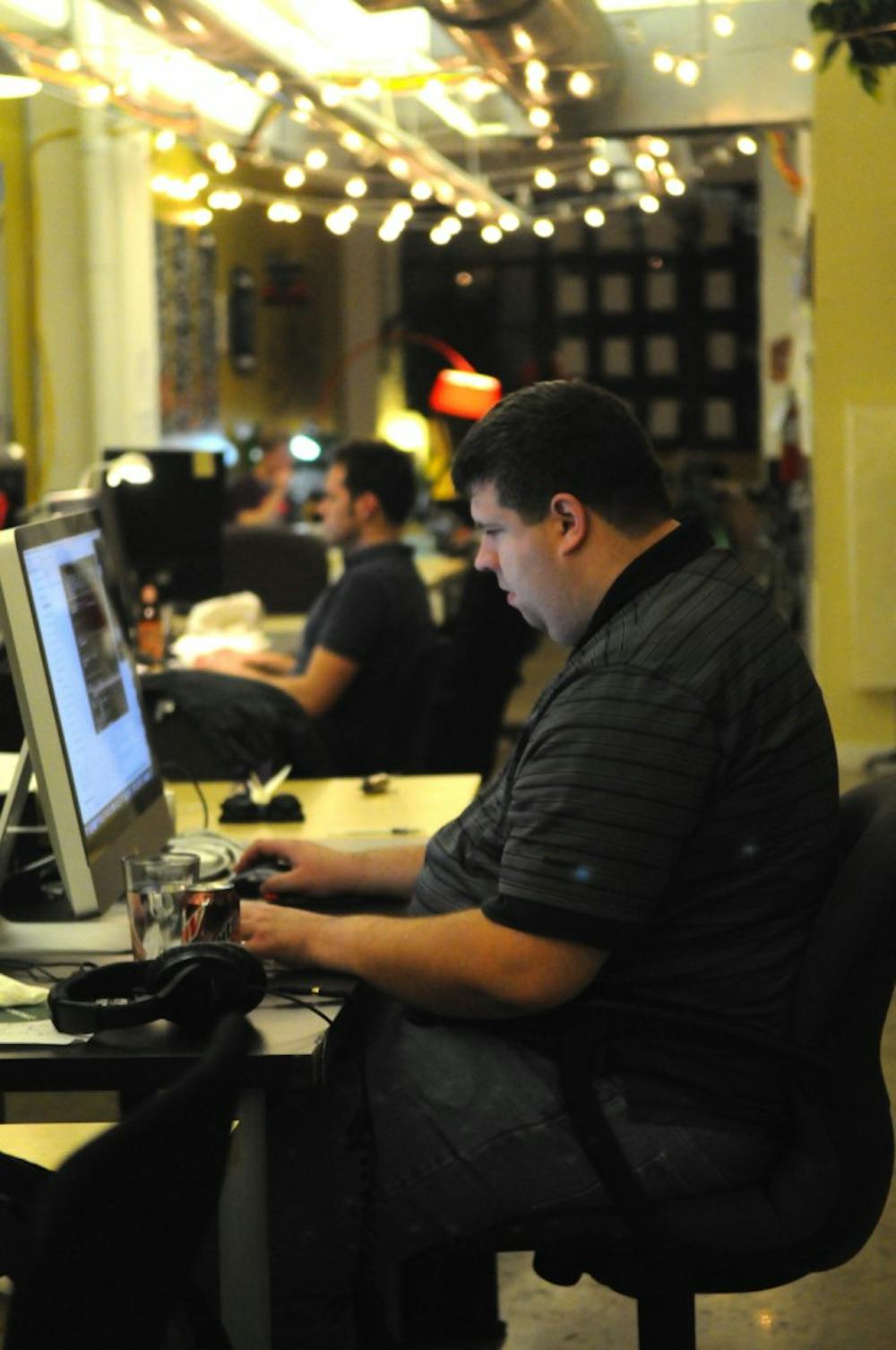
Few people work in a office with a kegerator, vintage phone booth, ping-pong table and Xbox 360.
But Independents Hall is not a regular office.
Affectionately called IndyHall by its members, the “coworking space” rents out desks to work in a place of constant collaboration.
The first thing I noticed upon entering one afternoon is the openness of the space at 3rd and Church streets. While IndyHall is divided into a west and east side, there are no separating walls that divide and cut off one worker from the next.
Adam Teterus, IndyHall’s “point-man” of IndyHall, greeted me. A recent Temple University graduate who wanted to do something different with his skills, Teterus takes care of day-to-day management of IndyHall.
The space is filled with desks. Black desks signify full time members who have unlimited access to their work spaces, while tan ones signify “lite membership,” for users who come in only three times a week. The black and tan desks are purposely interspersed so new members can learn from gurus who already know the ways of IndyHall.
According to Teterus, there are about 50 unique visitors —designers, writers, artists, entrepreneurs — who come to the space every week.
Teterus led me to a table near the kitchen where I could work, because all the desks were taken. I sat down and flipped my coaster to the green, “co-working” side. Each person in IndyHall has a coaster on his or her desk with two symbolic sides — green to signify they want to collaborate and red to show the opposite.
The kitchen itself is openly integrated with the rest of IndyHall, and contains both communal items, such as an espresso machine, and food items labelled with each individual member’s names. A kegerator, a refrigerator with a keg inside and a connecting faucet on top, lies conspicuously to one side of the kitchen and is filled with free beer brewed by one of the members of the space.
The kegerator is not the least of the eclectic items. In the back, there is a ping-pong table for members who feel like challenging another to a match. In the middle of the space, I felt a throwback to the 1900s, when I encountered an antique Bell telephone booth. While walking around, I heard someone begin to take a shower —probably a worker who stayed up too late the previous night.
Teterus said he lets the space grow “organically,” and the members have shaped IndyHall into their second home.
One member had placed multiple paintings across the entire space, drawing murals on the wall, and even carving wooden birds to hang from the ceiling lights. Others customized their desks with figurines or stickers of the projects they are working on. A white board behind the desk of a University of the Sciences professor had scribbles of complex mathematical formulas.
Alex Hillman, co-founder of IndyHall, has been building on this concept since 2006. IndyHall moved into its current location in 2009.
Hillman emphasizes that it’s the community, not the location, that makes the space so successful — and the community is quite the community.
From music writers to painters, travel agents and programmer entrepreneurs, IndyHall’s people are as eclectic as its decorations.
Teterus subscribes to the party theory: “if you want to get stuff done, throw a party.” IndyHall’s party mentality is best symbolized by its plentiful collection of hard alcohol and wine supply on top of its kitchen shelf.
Despite the parties, projects get done, Teterus said. “Collaboration is what IndyHall is all about.”
For instance, Parker Whitney, a graphic designer, and Jake O’Brien, a programmer, started Flyclops when the two met over an IndyHall dinner a few years ago. They’ve been collaborating on creating video games ever since.
Similarly, two programmers Bula Buhlar and Salas Saraiya came together to make a mobile application, called Sheltr, which allows people to locate the nearest homeless shelter.
After a few hours, I left the vibrant IndyHall, which felt like a wonderland, and returned to the real world.
IndyHall’s success has led to a planned expansion that will almost double the size of the space. With more space comes more desks for people from all walks of life — even university students.
Hillman said they do not get a lot of university students that frequent the place, but it can be “an alternative to a library” for students.
Many students are exploring what they want to do in the future. At co-working spaces like IndyHall, students can rub elbows with professionals who could provide mentorship, Hillman added. And with such a creative space to work, the future looks bright.
The Daily Pennsylvanian is an independent, student-run newspaper. Please consider making a donation to support the coverage that shapes the University. Your generosity ensures a future of strong journalism at Penn.
DonatePlease note All comments are eligible for publication in The Daily Pennsylvanian.








